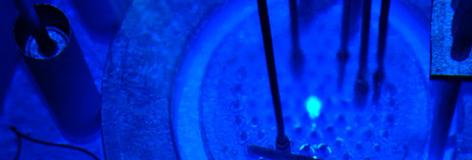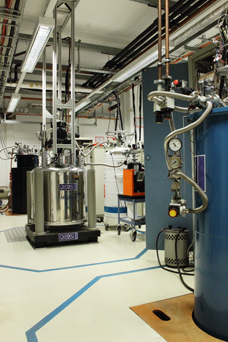Vienna University of Technology

 AT
AT
TUW
www.ati.ac.at
Organization profile:
The Vienna University of Technology has about 27.000 students and 3.300 research and technical personnel covering engineering, architecture, electrical and information technology, informatics and natural sciences. The Physics Faculty consists of four university institutes, one of them, the Atominstitut (ATI), specializes in teaching and research on atomic, nuclear, neutron, solid state and low temperature physics as well as radiation effects, nuclear chemistry and quantum optics. It operates the only research reactor in Austria.
Department: The Low Temperature Physics Department (LTP) of ATI (http://www.ati.ac.at) with five permanent scientific and technical staff and approximately 10 scientists hired under contracts is specialized in research on superconductivity, since 1987 almost exclusively on high temperature superconductors. Its key personnel have broad experience in managing national and international projects, among them about 10 European projects in the framework of EURATOM and a highly successful TMR programme of the Eu on high-field/high-current superconductors (SUPERCURRENT). LTP also participated in about 10 European research programmes and networks. LTP is particularly well equipped for the assessment of the transport and magnetic properties of superconductors (including the angular dependence of both the critical currents and the magnetic moments) in a broad field and temperature range.
Leader:
Prof. H. W. Weber is the leader of LTP
Prof. H.W. Weber also leads the effort of the Vienna group, and work together with Dr. M. Eisterer, Ao. Prof. F. M. Sauerzopf and two research fellows to be hired under the contract. The group has an excellent publication record in the fields of flux pinning, anisotropy effects, current percolation and magnetic characterisation techniques of low and high temperature superconductors.
Expertise:
LTP has wide experience in the modification of the defect microstructure especially in high temperature superconductors (on the scale of a few nm) and its analysis in terms of flux pinning. Highly specialized measuring and evaluation techniques for the separation of inter- and intra-granular current flow are available and will be employed for the characterization of materials developed by consortium members. The Vienna group will perform bench marking experiments on the optimal defect structure for flux pinning, thus indicating possible routes for modifying the production processes. All characterization work is aimed at assessing the fundamental superconductive parameters, the role of granularity and current percolation as well as the flux pinning action of certain defect structures at the level of a few nm.
Specific facilities:
- TRIGA Mark II research reactor
- Two SQUID magnetometers and a vector VSM
- Several scanning facilities (magnetoscan, trapped field), low temperature STM/MFM
- Two-axis goniometer for critical current measurements
- 18 T magnet – ac susceptibility, current transport up to 1000 A
Personnel assigned to this project:
Prof. H.W. Weber, Dr. M. Eisterer, Ao. Prof. F.M. Sauerzopf, Dr. M. Zehetmayer, two project assistants, two technicians
Main tasks in SUPER-IRON:
- Neutron irradiation
- Critical current measurements
- Evaluate basic superconductive properties
- Assess application potential





 Based on the Exchange of Letters, JST and EC DG RTD have agreed to establish a new scheme for coordinated funding of Japanese-EU coordinated research projects (see European Community press release IP/09/1844). After consultations between JST and EC DG RTD, “Superconductivity” has been selected as the field of research for the coordinated funding scheme.
Based on the Exchange of Letters, JST and EC DG RTD have agreed to establish a new scheme for coordinated funding of Japanese-EU coordinated research projects (see European Community press release IP/09/1844). After consultations between JST and EC DG RTD, “Superconductivity” has been selected as the field of research for the coordinated funding scheme.